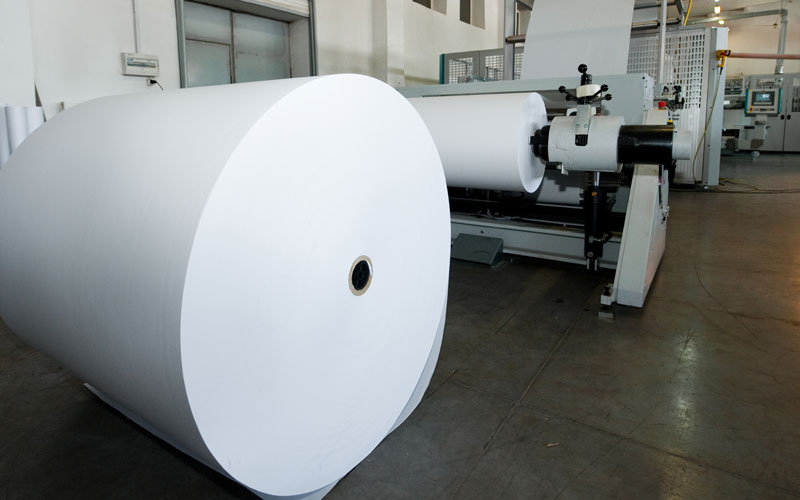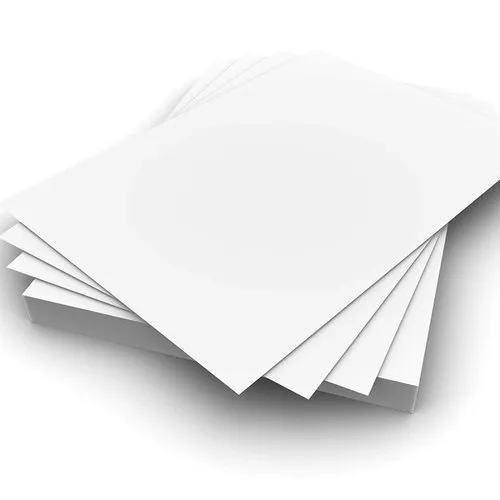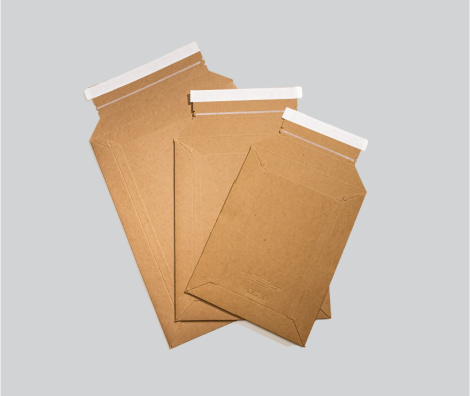Durable and Versatile Duplex Board for Premium Packaging, Printing, Crafting, and Creative Projects with Superior Strength .


duplex board
Duplex paperboard is a type of paperboard known for its strength, versatility, and cost-effectiveness. Widely used in the packaging industry, it consists of two layers or sheets glued together, usually with one side having a smooth, coated finish while the other remains uncoated. This dual-layered structure is what gives duplex board its name and unique properties.
Properties of double-sided corrugated board
Duplex corrugated board has several important properties:
Strength and durability:
Double-layered construction gives it high strength, making it suitable for packaging heavy items.
It can withstand pressure and effectively protect the contents. Surface Finish:
One side of a double-sided panel is coated, providing a smooth surface suitable for printing or marking.
The uncoated side is more textured and is often used for structural purposes. Weight and thickness:
Duplex boards are available in a range of weights, usually measured in grams per square meter (gsm).
Standard weights range from 200 g/m² to 450 g/m², allowing for greater flexibility in application. process:
The Duplex board made from the processed paper cellulose is environmentally friendly and can be handled several times.
Humidity resistance:
A specific type of double board is suitable for food packaging because it is processed to increase the resistance to humidity.
Types of Duplex Board
There are several variations of duplex board, each suited to specific uses:
Coated Duplex Board:
Featuring a gloss or matte coating on one side, ideal for high-quality printing.
Uncoated Duplex Board:
Lacks a gloss finish, often used where aesthetics are less critical. Grey Back Duplex Panel:
The back layer is made from recycled materials and is grey in color.
Commonly used for secondary packaging. Rear White Duplex Card:
The two layers are made of white paper paste and provide white finish on both sides.
Used for premium packaging applications. Food grade double sided corrugated board:
Specially treated to meet food safety standards.
Typically used for packaging food products such as baked goods and frozen foods.
The production of double-sided cards involves several complex steps:
Pulp preparation:
Raw materials such as recycled paper, wood pulp are crushed to make pulp.
The sieving and washing process removes impurities. Layer formation:
The oil is spread on the wire mesh to form the first layer.
The second layer is added on top of the first, creating a two-layer structure. Pressing and drying:
The board passes through a series of rollers to remove excess water.
It is then dried using heated rollers or air. Coating:
A coating is applied to one side to create a smooth, printable surface.
Multiple layers of coating can be applied, depending on the desired finish. Cutting and Packaging:
The double-sided cardboard is cut into sheets or rolls of the required size.
It is then packed and sent to the customer.
Applications of double sided corrugated board
Duplex corrugated board is very versatile and is used in many industries.
Packaging industry:
Used to make boxes for shoes, clothing and electronics.
It is the perfect material for rigid, foldable corrugated boxes. Food industry:
Resistant to moisture and grease, it is ideal for food packaging.
Commonly used for pizza boxes, confectionery packaging, disposable plates, etc. Printing and Marking:
The smooth surface is ideal for high-quality printing, allowing you to create vibrant designs and logos.

GREY BACK DUPLEX
Stationery:
Used to make covers for files, folders and other office supplies. health:
It is used to produce pharmaceutical boxes and other health care packaging solutions.
Environmental impact
Recycling and sustainability:
Double-sided paper cartons are made primarily from recycled paper, reducing waste and saving resources.
They are biodegradable and will break down naturally if disposed of properly. Energy efficiency:
The process of producing a duplex plate consumes less energy than other packaging materials such as plastic and metal.
problem:
Duplex card production can generate waste and emissions if you are not responsible for a responsible method. The adoption of clean production can relieve these problems.
Future of duplex paintings
The demand for sustainable and environmentally friendly packaging leads to innovations in the manufacture of duplex cards. Certain trends and developments include:
Advanced coatings:
Research focuses on the development of biodegradable and water -based coatings to replace traditional plastic coverings. Improved processing technology:
Improving the recycling process is expected to improve the quality and ease of use of the processed double board.
Digital printing integration:
Due to the achievements in the field of printing technology, you can use the Duplex Board in a personalized solution request. Market Growth:
The global duplex board market is expected to grow significantly due to rising demand in emerging countries.
Environmental Impact
Recycling and Sustainability:
Double-sided board is primarily made from recycled paper, reducing waste and conserving resources. They are biodegradable and will break down naturally if disposed of properly.
Energy Efficiency:
The manufacturing process of duplex cartons consumes less energy compared to other packaging materials such as plastic and metal. Challenges:
Duplex panel production can generate wastewater and emissions if not managed responsibly.
Adopting cleaner production techniques can mitigate these issues.
Duplex corrugated board is a ubiquitous and irreplaceable material in modern packaging. Its combination of durability, printability and environmental benefits has made it the preferred choice across many industries. As technology advances and sustainability becomes a focal point, the importance of duplex boards in the global market is set to rise even further.
Duplex corrugated is a type of corrugated board known for its strength, versatility and cost-effectiveness. Widely used in the packaging industry, it consists of two layers or sheets bonded together, usually with a smooth coated finish on one side and uncoated on the other. This two-ply structure gives Duplex panels its name and unique properties.
As a material that combines strength, adaptability and environmental friendliness, Duplex panels have an important place in many industries, especially the packaging industry. From high-quality printing applications to robust barrier functionality for sensitive products, the uses of duplex panels are extensive and continually growing. Their production and applications reflect both innovative engineering and a commitment to sustainability, making them a key discussion topic in modern manufacturing and commerce.

Properties and Types of Duplex Board
Duplex boards exhibit several key properties that make them suitable for diverse applications. Firstly, their strength and durability are unmatched in the realm of paper-based products. Its two-layer construction makes it highly resistant to physical impacts, effectively protecting the contents inside. Furthermore, the surface finish of the Duplex panels sets them apart .
one side is smooth and coated, giving the impression of high quality, while the other side is uncoated, providing functional practicality. The weight and thickness of duplex boards are customizable, ranging from 200 GSM to 450 GSM, allowing manufacturers to tailor the material to specific needs. Moreover, their recyclability underscores their eco-friendliness, as they are made primarily from recycled paper pulp.
The versatility of duplex cards is further emphasized by the different types they come in: coated double-sided boards, with either a glossy or matt finish on one side, making them ideal for premium packaging; Uncoated duplex boards, although lacking this gloss, are preferred for utility applications.
Gray-backed duplex boards are economical options used for secondary packaging, while white-backed duplex boards provide a superior finish for high-end products. Processed to strict safety standards, food-grade duplex boards are widely used in the food industry. The combination of these types highlights the adaptability of duplex boards across various industries and their potential to meet specialized requirements.
Production of the Duplex Card is a complex process that includes some steps designed to improve the quality and functions of the final product. It begins with the preparation of cellulose, in which transformed paper, wood pulp, and other raw materials are divided into suspensions. This slurry is sieved and cleaned to remove impurities, ensuring a high-quality base material. The next step is layer forming, where the first layer of dough is spread over a wire mesh, followed by the application of a second layer to create the double-ply structure.
Once the layers are formed, the material is passed through a series of rollers to remove excess moisture and then dried using heat or air. The coating step is essential to create a smooth surface on one side of the board, and is usually achieved by applying multiple coats of a gloss or matt finish. Finally, the duplex board is cut into sheets or rolls and packaged for distribution. This production process reflects a balance between efficiency and precision, ensuring that duplex boards meet the varied requirements of their end users.
Duplex board is known for its wide range of applications covering various industries like packaging, food, printing, medical etc. In the packaging industry, it is used to make boxes for shoes, clothing, electronics etc, providing a durable and attractive solution for consumer goods. Its role in the food industry is equally important, where its resistance to moisture and fat means it is used to package pizza, bakery products and confectionery
while in the printing and branding industry the smooth coated surface of the double-sided panels allows for high quality designs and logos, making them ideal for promotional materials. Additionally, their versatility is highlighted by their use in stationery products such as file covers and folders. The healthcare sector also uses double cartons for medicine boxes and related packaging needs.
From an ecological point of view, duplex cartons are a sustainable alternative to plastic-based packaging materials. Made largely from recycled paper, they contribute to reducing waste and conserving resources. They are biodegradable and decompose naturally when they are eliminated properly, reducing their ecological footprint.

WHITE BACK DUPLEX
However, challenges remain, such as the generation of wastewater and emissions during manufacturing. The implementation of cleaner production methods and the use of renewable energy sources can help mitigate these issues. As consumer preferences shift towards sustainability, duplex panels can play a key role in reducing the environmental impact of packaging solutions.
The future of Duplex board is closely tied to technological advances and an increasing emphasis on sustainability. Research and development efforts are focused on developing biodegradable, water-based alternatives to traditional plastic coatings, making Duplex board even more environmentally friendly.
Recycling technologies are also advancing, allowing higher quality recycled materials to be used in production, and the integration of digital printing allows for the creation of personalized and customized packaging solutions, expanding the reach of the double-sided panel market. Furthermore, rising demand in emerging economies and a shift away from plastic packaging are expected to drive significant growth in the global duplex board market.
Duplex cardboard is a universal, durable and environmentally friendly material that meets the demands of modern packaging and more. Their unique properties, variety of types and sustainable nature make them an invaluable resource for industries around the world. As technology continues to evolve and global priorities shift toward sustainability, Duplex Boards will continue to be a cornerstone of innovation and environmental responsibility.
Innovation of the Duplex board industry has opened more advanced applications and greater efficiency. One of the most notable trends is the development of multilayer boards that can meet the complex requirements required for luxury packages.
These boards contain additional coatings and layers for superior stiffness and aesthetics. Additionally, nanotechnology is beginning to play a role in improving the barrier properties of duplex boards, making them more resistant to moisture, grease and oxygen. These advancements not only increase the functionality of duplex cards but also broaden their appeal in the high-end market.
Another important trend is the move towards automation and digitalization in manufacturing processes: automated machines and artificial intelligence are being deployed to monitor and optimize production lines, reducing waste and energy consumption. Additionally, digital printing technology is revolutionizing the way duplex panels are customized.
Brands can now produce limited edition or region-specific packaging with greater ease and cost, giving them a competitive advantage in the marketplace. This adaptability is especially valuable in the age of e-commerce, where unique and attractive packaging plays a key role in customer loyalty.
The increasing consumer demand for sustainable packaging solutions has placed duplex boards in a favorable position. Modern consumers are not only seeking eco-friendly products but are also becoming more discerning about the sustainability practices of the companies they support. Duplex cartons, with their recyclable and biodegradable properties, are ideal for these preferences.
Companies that use duplex cartons in their packaging can effectively demonstrate their commitment to environmental responsibility while enhancing their brand image and appeal. Additionally, regulatory changes in many countries are resulting in stricter requirements for single-use plastics, further increasing the demand for eco-friendly alternatives such as double cartons.
The use of sustainable raw materials is another field that is interested in the double council industry. Some manufacturers have experienced agricultural residues and other unusual fibers to create boards that affect even lower environments. This innovation not only addresses the scarcity of traditional raw materials but also provides an opportunity to add value to agricultural byproducts that would otherwise go to waste.
The global market for duplex boards is experiencing robust growth, driven by the rapid expansion of industries such as food and beverage, pharmaceuticals, and e-commerce. Asia-Pacific remains a dominant player in this market, with countries like China and India leading the charge due to their large populations and growing economies.
The region’s production capacities and relatively low production costs have made it a center for duplex panel production. At the same time, North America and Europe are also important markets characterized by the demand for sustainable and high-quality packaging solutions. The electronic commerce boom had a deep effect on the duplex council market.
With a large number of consumers who shop on the Internet, the need for attractive sustainable and visual packaging has developed. Duplex boards are ideal for this purpose, offering a combination of strength and printability that meets the demands of online retailers and customers alike. Additionally, the pharmaceutical sector\’s reliance on duplex boards for medicine packaging is expected to grow, driven by increased healthcare needs and advancements in drug delivery systems.

Technological Advances and Challenges
Duplex cards offer many advantages, but the industry faces challenges that require innovative solutions. For example, the use of water- and energy-intensive production processes raises sustainability concerns. To address this, companies are investing in clean production technologies such as water recycling systems and renewable energy sources, which not only reduce the environmental impact of their production but also make it more profitable.
Another problem is competition for alternative packaging materials such as biodegradable plastics and aluminum. To stay ahead, the Duplex council industry must continue to introduce innovations and highlight its unique advantages, such as excellent impression and structural integrity. Additionally, developing collaborative relationships with research institutes and technology providers helps manufacturers stay at the forefront of innovation.
In conclusion, the duplex board industry is at an exciting crossroads characterized by rapid advancements and expanding opportunities. By adhering to the principles of sustainable development, embracing technological innovation and adapting to changing consumer preferences, the industry can ensure its continued growth and relevance in a competitive market.
The future of Duplex Plank is closely linked to technological advances and the growing interest in sustainability. Research and development work is aimed at developing biodegradable, water-soluble alternatives to traditional plastic coatings, which will make Duplex boards even more environmentally friendly.
Recycling technologies are also advancing, allowing higher quality recycled materials to be used in production, and the integration of digital printing allows for the creation of personalized and customized packaging solutions, expanding the reach of the double-sided panel market. Furthermore, increasing demand from emerging economies and a shift away from plastic packaging are expected to drive significant growth in the global duplex panel market.



